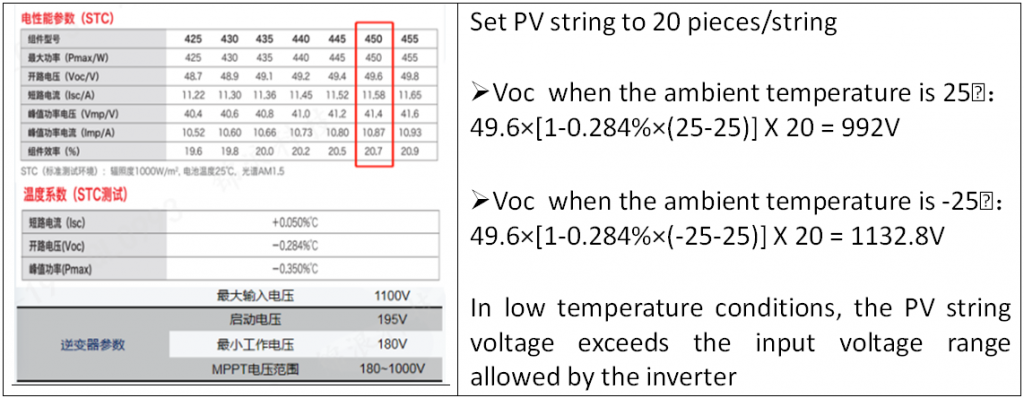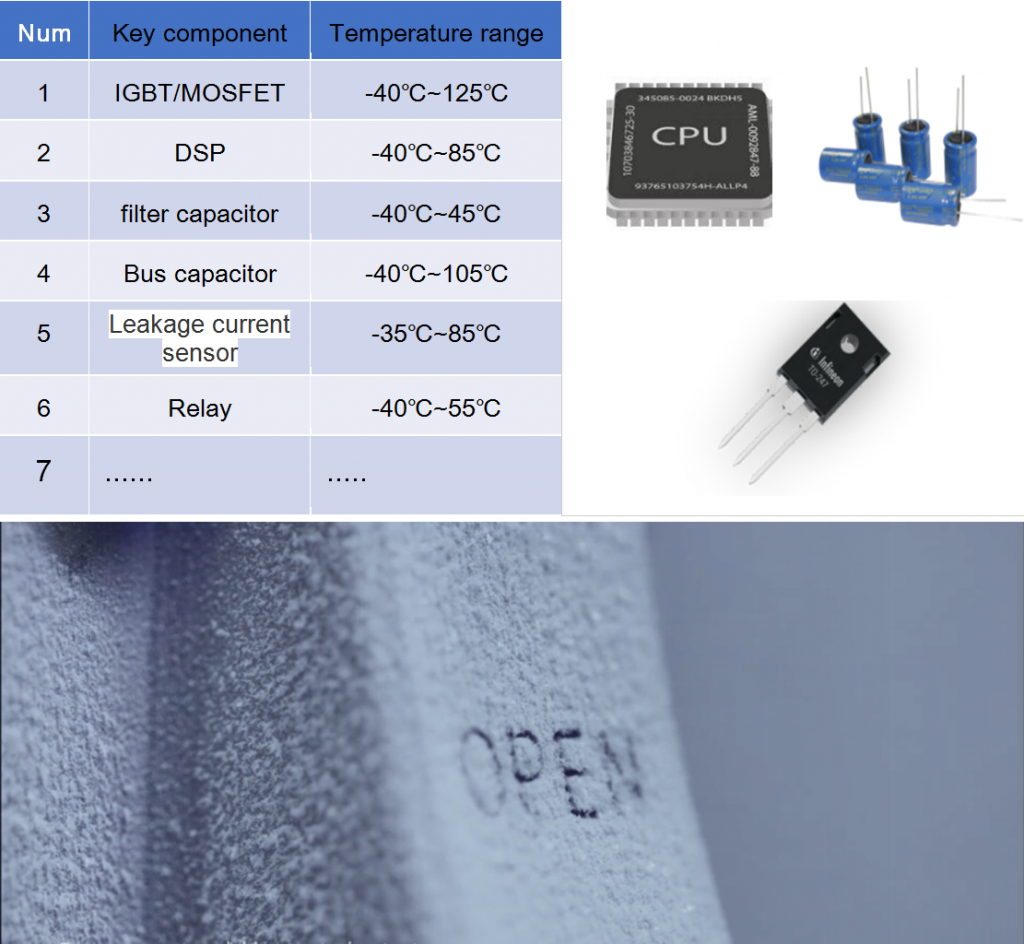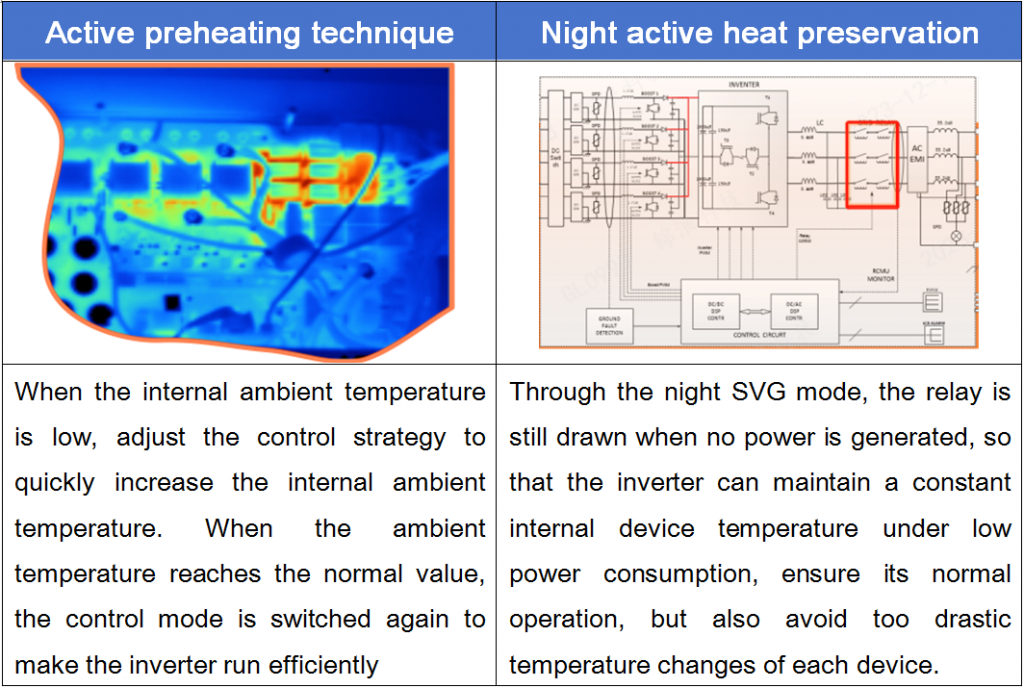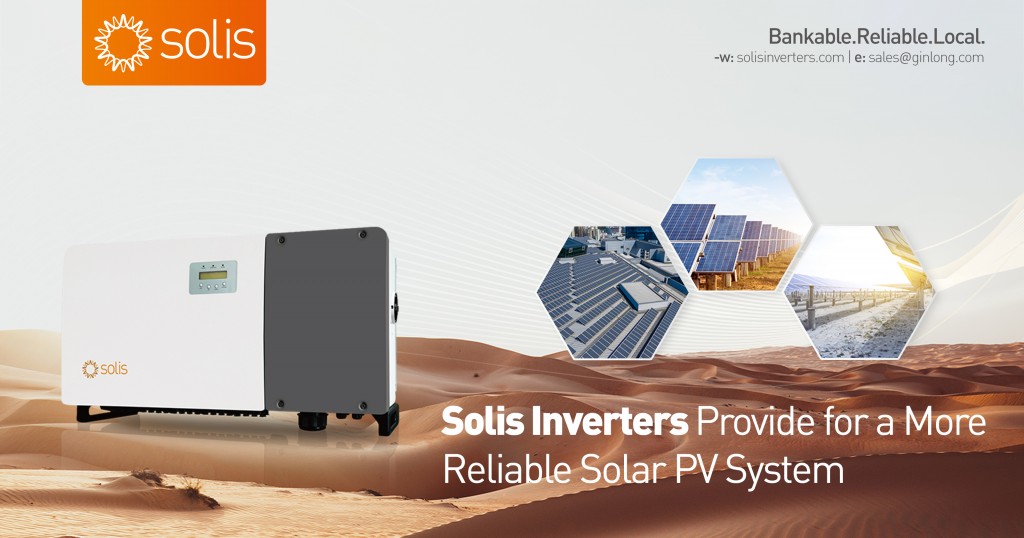Enhancing Winter Performance: Inverter Management in Cold Weather
15:20 | 28/02/2024
 |
Effects of Low Temperature on Inverter Operation:
Voltage Fluctuations:
Low temperatures elevate the open circuit voltage of PV modules, causing an increase in the inverter system voltage. Prolonged exposure to high pressure affects the inverter's switching device, impacting its life and reliability. In low-temperature conditions, the PV string voltage could exceed the inverter's input voltage range, leading to potential issues.
 |
Temperature-Sensitive Components:
Internal components like IGBTs, DSPs, capacitors, etc., have specific temperature ranges for optimal performance. Operating outside these ranges may affect the lifespan and reliability of the inverter.
Rapid temperature changes, induced by low temperatures, can stress these components, negatively affecting performance.
The temperature stress caused by repeated high and low-temperature changes will reduce the physical or chemical properties of the inverter material and device, affecting the product's working performance or service life of the product.
 |
Fan Operation:
High-power inverters use external fans to dissipate heat. In low-temperature conditions, external fans may freeze, compromising functionality.
Protective measures and operational insights
Photovoltaic inverters combat extremely cold conditions through strategic installation protection and auxiliary measures:
 |
Strategic Installation:
Positioning the inverter indoors, under eaves, beneath components, or in other shielded locations, including the use of shielding plates, to shield against direct exposure to snow and cold air. This method is particularly effective for series inverters and microinverters, leveraging their inherent low-temperature adaptation capabilities.
Auxiliary Cold Protection:
Implementing external or built-in heaters to initiate the heating device in low-temperature environments. This gradual warming process elevates the working temperature, facilitating the seamless operation of centralized and distributed inverters.
 |
Internal Preheating and Heat Preservation:
Leveraging innovative technology and control strategies for internal preheating and heat preservation. Notably, some Solis inverters incorporate active preheating and night insulation measures, ensuring stable and reliable operation in challenging low-temperature and extremely cold conditions.
 |
Inverters Not Starting at Low Temperature
When ambient temperatures are below -25 ℃ for an extended period, the inverter activates the "LowTemp.AMB" mode. Proper functionality commences when the ambient temperature reaches the under-temperature threshold. Adjusting this threshold according to field requirements can enable safe lower-temperature operation. It is advised to consult with Solis technical engineers to evaluate specific field situations and confirm the feasibility of measures and thresholds.
 |
Conclusion:
As temperatures decline, the importance of maintaining PV power stations and inverters becomes even more important. Low temperatures can impact the operational state of inverters, potentially triggering the "under temperature protection" mode. Ensuring stable and reliable inverter operation in winter conditions involves implementing protective measures and adhering to essential operational and maintenance protocols. For further insights, refer to Solis Seminar [Episode 51]: "Pay attention to these common O&M problems with inverters in the wintertime."

![Solis Seminar [Episode 56]: Online O&M dispersion analysis](https://vietnamenergy.vn/stores/news_dataimages/Lemy/092023/07/11/0940_Solis_1.jpg?rt=20230907111046?230907111707)
![Solis Seminar [Episode 55]: Using the piecewise method to check the PV string ground point](https://vietnamenergy.vn/stores/news_dataimages/Lemy/072023/24/10/1349_24.6.jpg?rt=20230724101530?230724103035)






